
Lai, Erh-Min (賴爾珉)
Director
Research Fellow
- Ph.D., Plant Pathology, University of California, Davis, USA
- Molecular mechanisms of plant-pathogen interactions
- emlai@gate.sinica.edu.tw
- emlai@as.edu.tw
- +886-2-2787-1031 (Lab: A325)
- +886-2-2787-1158 (Office: A329)
- Lab Website
- X:@erhminlai
- Academia Sinica Archive
- ORCID
- Web of Science (WOS)
- Google Scholar
It is increasingly clear that microbes are essential components for almost all life forms on earth. Thus, understanding how microbes interact with other organisms within microbial community or inside the associated hosts are crucial for improvement of human and plant health. The major research interests in my laboratory are to understand the molecular mechanisms underlying how bacterial pathogens deploy protein secretion systems for survival at its ecological niche and successful infection inside the plant host. My laboratory investigates the mechanistic and biological insights of the two major protein secretion nanomachines, type IV and type VI secretion systems (T4SS and T6SS), in Agrobacterium tumefaciens, the causal agent of crown gall disease and powerful gene transfer tool. By investigating the mechanistic and biological functions of T4SS and T6SS, we hope to understand the underlying mechanisms how A. tumefaciens survive and overcomes several lines of host defense response for successful infection. The knowledge may provide new insights to improve Agrobacterium-mediated plant transformation and translational applications in biomedicine and/or agriculture.
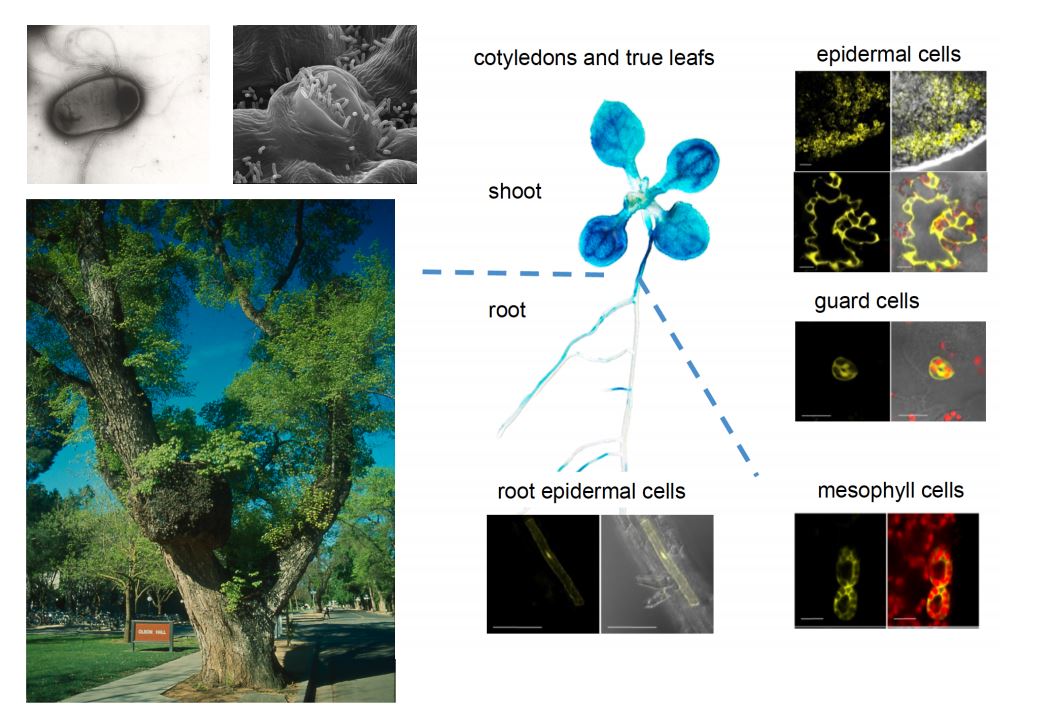
Figure 1. Agrobacterium tumefaciens is a phytopathogenic bacterium that causes crown gall disease by transferring transferred DNA (T-DNA) into the plant genome (Crown gall tumor on an elm tree at UC Davis campus, photo taken by Jer-Ming Hu). We have developed a highly efficient and robust Agrobacterium-mediated transient expression system, named AGROBEST (Agrobacterium-mediated enhanced seedling transformation), for gene functional analyses (Wu et al., 2014. Plant Methods).
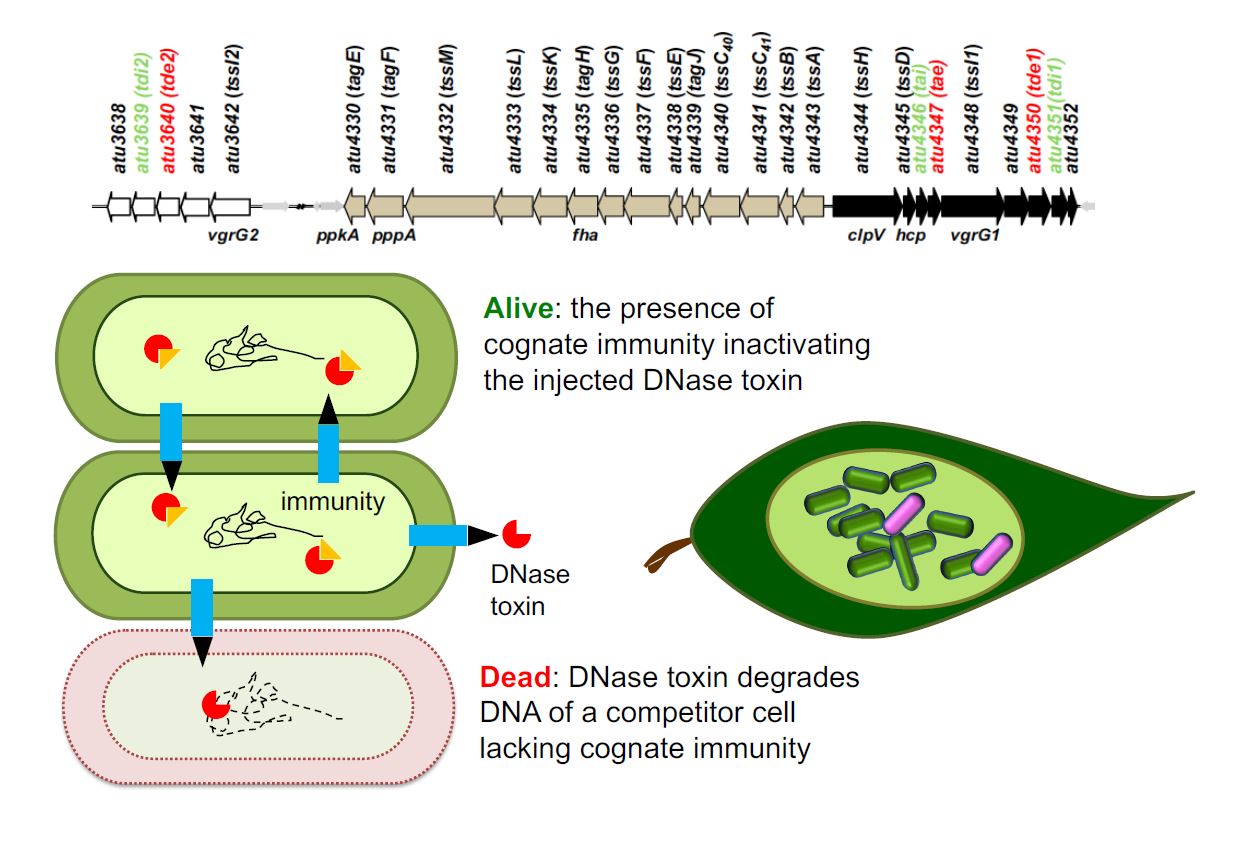
Fig. 2. Type VI secretion DNase effectors as weapons for Agrobacterium survival advantage in planta. A. tumefaciens attacks co-existing competitors via injecting T6SS Tde toxins into competitor cells and thereby provides a competitive advantage for Agrobacterium survival inside the plant host (Ma et al., Cell Host Microbe, 2014). The t6ss gene cluster encoded by A. tumefaciens strain C58 is shown.
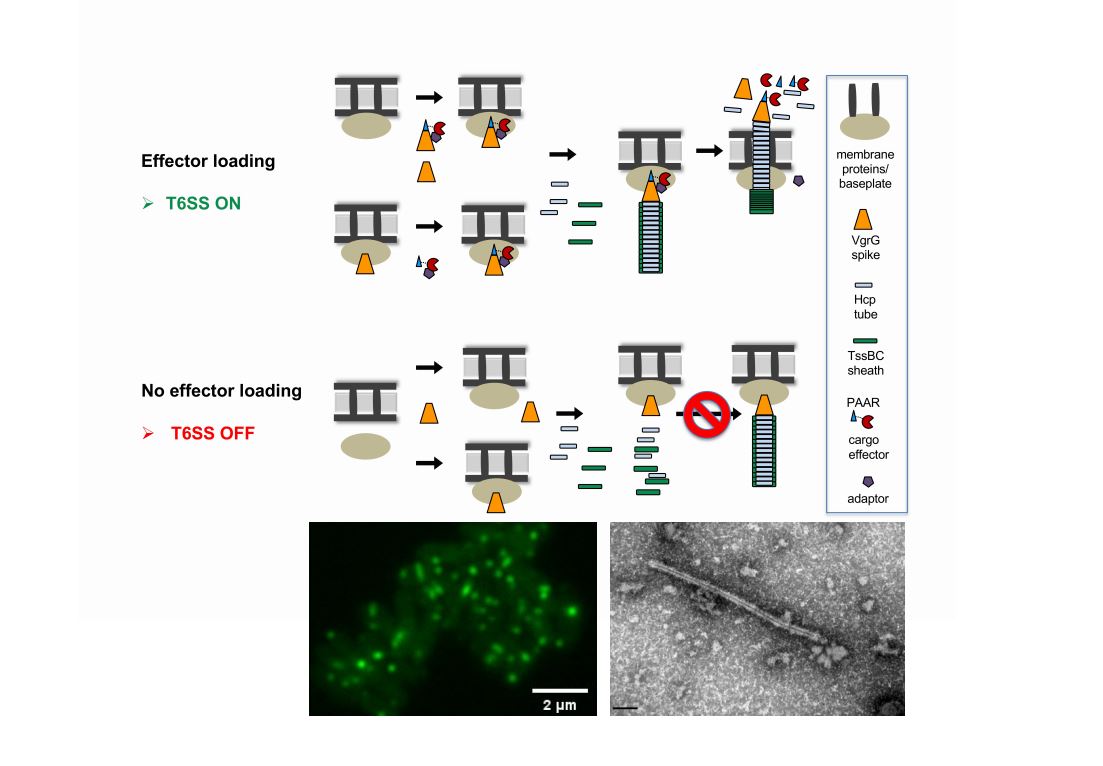
Fig. 3. T6SS effectors are not just passengers but their loading onto the carriers also activate T6SS sheath assembly. This is potentially a widespread mechanism, which may be deployed by many T6SS-possessing bacteria as a strategy for efficacious T6SS firing to ensure that effectors are loaded onto T6SS prior to completing its assembly(Wu, Lien et al., EMBO Reports, 2019).
Research articles
- Sung LK, Lin JS, Wang YC, Wu CF, Hsu HW, Chang JH, Kuo CH* , Lai EM * (2025) Co-option of a degenerated polysaccharide transporter for type VI protein secretion across diverse α-Proteobacteria. Res Square (Preprint) https://doi.org/10.21203/rs.3.rs-7993693/v1
- Liu MS, Huang TK, Wang YC, Wang SC, Wu CH, Kuo CH, Lai EM * (2025) Floral Stage Optimization and Immune Evasion Enhance Agrobacterium-Mediated Genome Editing in Arabidopsis. New Phytologist. https://doi.org/10.1111/nph.70795
- Wu Y, Chang HY, Wu CH, Lai EM*, Kuo CH* (2025) Comparative Transcriptomics Reveals Context- and Strain-Specific Regulatory Programs of Agrobacterium During Plant Colonization. Microbial Genomics 2025 Aug;11(8).doi: 10.1099/mgen.0.001485.
- Lai X, Yu M, Cheng CP, Lai EM* 2025 Distinct strategies of diguanylate cyclase domain proteins on inhibition of virulence and interbacterial competition by agrobacteria. mBio:e00039-25.
- Lopez-Agudelo JC, Goh FJ, Tchabashvili S, Huang YS, Huang CY, Lee TK, Wang YC, Wu Y, Chang HX, Kuo CK, Lai EM, Wu CH* (2024) Rhizobium rhizogenes A4-derived strains mediate hyper-efficient transient gene expression in Nicotiana benthamiana and other solanaceous plants. Plant Biotechnology Journal pp. 1–14
- Santos MNM, Pintor KL, Hsieh PY, Cheung YW, Sung LK, Shih YL, and Lai EM* (2024) Agrobacteria deploy two classes of His-Me finger superfamily nuclease effectors exerting different antibacterial capacities against specific bacterial competitors. Front. Microbiol. 2024 Feb 14:15:1351590. doi: 10.3389/fmicb.2024.1351590
- Ali J, Yu M, Sung LK, Cheung YW, and Lai EM* (2023) A glycine zipper motif
is required for the translocation of a T6SS toxic effector into target
cells. EMBO Rep e56849 https://doi.org/10.15252/embr.202356849 - Wang SC, Chen AP, Chou SJ, Kuo CH*, and Lai EM* (2023) Soil Inoculation and Blocker-Mediated Sequencing Show Effects of the Antibacterial T6SS on Agrobacterial Tumorigenesis and Gallobiome. mBio March 6: e00177-23 https://doi.org/10.1128/mbio.00177-23
- Yu M, Wang YC, Huang CJ, Ma LS, and Lai EM*. (2020) Agrobacterium tumefaciens Deploys a Versatile Antibacterial Strategy to Increase its Competitiveness. J Bacteriol. 2020 Nov 9:JB.00490-20. doi: 10.1128/JB.00490-20.
- Lin HH, Yu M, Sriramoju MK, Hsu ST, Liu CT*, and Lai EM* (2020) A high-throughput interbacterial competition screen identifies ClpAP in enhancing recipient susceptibility to type VI secretion system-mediated attack by Agrobacterium tumefaciens. Front. Microbiol. doi: 10.3389/fmicb.2019.03077.
- Santos MNM, Cho ST, Wu CF, Chang CJ, Kuo CH, and Lai EM* (2020) Redundancy and specificity of type VI secretion vgrG loci in antibacterial activity of Agrobacterium tumefaciens 1D1609 strain. Front. Microbiol. doi: 10.3389/fmicb.2019.03004.
- Wu CF, Lien YW, Bondage D, Lin JS, Pilhofer M, Shih YL, Chang JH, Lai EM*. (2019) Effector loading onto the VgrG carrier activates type VI secretion system assembly. EMBO Rep. 2019 Dec 5:e47961. doi: 10.15252/embr.201947961.
- Wu CF, Santos Santos MNM, Cho ST, Chang HH, Tsai YM, Smith DA, Kuo CH*, Chang JH*, Lai EM* (2019) Plant pathogenic Agrobacterium tumefaciens strains have diverse type VI effector-immunity pairs and vary in in planta competitiveness. Mol Plant-Microbe Interact. Mar 4. doi: 10.1094/MPMI-01-19-0021-R.(Editor's pick)
- Wang YC, Yu M, Shih PY, Wu HY, Lai EM* (2018) Stable pH Suppresses Defense Signaling and is the Key to Enhance Agrobacterium-Mediated Transient Expression in Arabidopsis Seedlings. Sci Rep 8(1):17071. doi: 10.1038/s41598-018-34949-9.
- Lin JS, P Panayiota, Wu HH, Tsai MD, Filloux A, and Lai EM* (2018) TagF-mediated repression of bacterial type VI secretion systems involves a direct interaction with the cytoplasmic protein Fha. J Biol Chem. 2018 293(23) 8829–8842. pii: jbc.RA117.001618. doi: 10.1074/jbc.RA117.001618.
- Shih PY, Chou SJ, Mueller C, Halkier BA, Deeken R, and Lai EM* (2018) Differential Roles of Glucosinolates and Camalexin at Different Stages of Agrobacterium-Mediated Transformation. Mol Plant Pathol. 19 (8), 1956–1970 DOI: 10.1111/mpp.12672. (recommended by Faculty 1000)
- Bondage D, Lin JS, Ma LS, Kuo CH, and Lai EM* (2016) VgrG C-terminus confers the type VI effector transport specificity and is required for binding with PAAR and adaptor-effector complex. Proc Natl Acad Sci U S A Jul 5;113(27):E3931-40. doi: 10.1073/pnas.1600428113. (recommended by Faculty 1000)
- Ma LS, Hachani A, Lin JS, Filloux A*, and Lai EM.* (2014) Agrobacterium tumefaciens deploys a superfamily of type VI secretion DNase effectors as weapons for interbacterial competition in planta. Cell Host & Microbe. Jul 9;16(1):94-104. doi: 10.1016/j.chom.2014.06.002. (recommended by Faculty 1000)
- Wu HY, Liu KH, Wang YC, Wu JF, Chiu WL, Chen CY, Wu SH, Sheen J, and Lai EM.* (2014) AGROBEST: an efficient Agrobacterium-mediated transient expression method for versatile gene function analysis in Arabidopsis seedlings. Plant Methods. Jun 18;10:19. doi: 10.1186/1746-4811-10-19. (recommended by Faculty 1000)
- Lin, J. S., Wu, H. H., Hsu, P. H., Ma, L. S., Pang, Y. Y., Tsai, M. D., and Lai, E. M.* (2014) Fha interaction with phosphothreonine of TssL activates type VI secretion in Agrobacterium tumefaciens. PLoS Pathog. Mar 13;10(3):e1003991. doi: 10.1371/journal.ppat.1003991.
Reviews or commentaries
- Huang TK and Lai EM* (2025) Cooperation and antagonism in Agrobacterium-mediated transformation. Nature Plants 11 (5), 946-948.
- Mijatović Scouten J, Hsieh SC, Sung LK, Wen HY, Kuo CH, Lai EM, and Chang JH* (2025) Function, evolution, and ecology of type VI secretion systems of plant-associated bacteria. Annu. Rev. Phytopathol. 63: 4.1-4.24
- Weisberg AJ*, Wu Y, Chang JH, Lai EM, Kuo CH* (2023) Virulence and ecology of Agrobacteria in the context of evolutionary genomics. Annu. Rev. Phytopathol. 2023 Sep 5;61:1-23. doi: 10.1146/annurev-phyto-021622-125009
- Ali J. and Lai EM* (2023). Distinct TssA proteins converge in coordinating tail biogenesis of the type VI secretion systems. BioEssays, e2200219. https://doi.org/10.1002/bies.202200219
- Wu HY and Lai EM* (2022) AGROBEST: a highly efficient Agrobacterium-mediated transient expression system in Arabidopsis seedlings. Methods Mol Biol Plant Synthetic Biology, 113-123. New York, NY: Springer. https://doi.org/10.1007/978-1-0716-1791-5_7. (Invited book chapter)
- Lin HH, Filloux A, and Lai EM* Role of Recipient Susceptibility Factors During Contact-Dependent Interbacterial Competition. (2020) Front. Microbiol. 11:603652. doi: 10.3389/fmicb.2020.603652.
- Hwang HH*, Yu M, and Lai EM*. (2017) Agrobacterium-mediated plant transformation: biology and applications. The Arabidopsis Book 15: e0186. USA: American Society of Plant Biologists.: e0186. doi: 10.1199/tab.0186.
- Lien YW and Lai EM* (2017) Type VI secretion effectors: methodologies and Biology. Front Cell Infect Microbiol Jun 15;7:254. doi: 10.3389/fcimb.2017.00254.
- Yu M and Lai EM* (2017) Warfare between Host Immunity and Bacterial Weapons. Cell Host & Microbe Jan 11;21(1):3-4. doi: 10.1016/j.chom.2016.12.012.
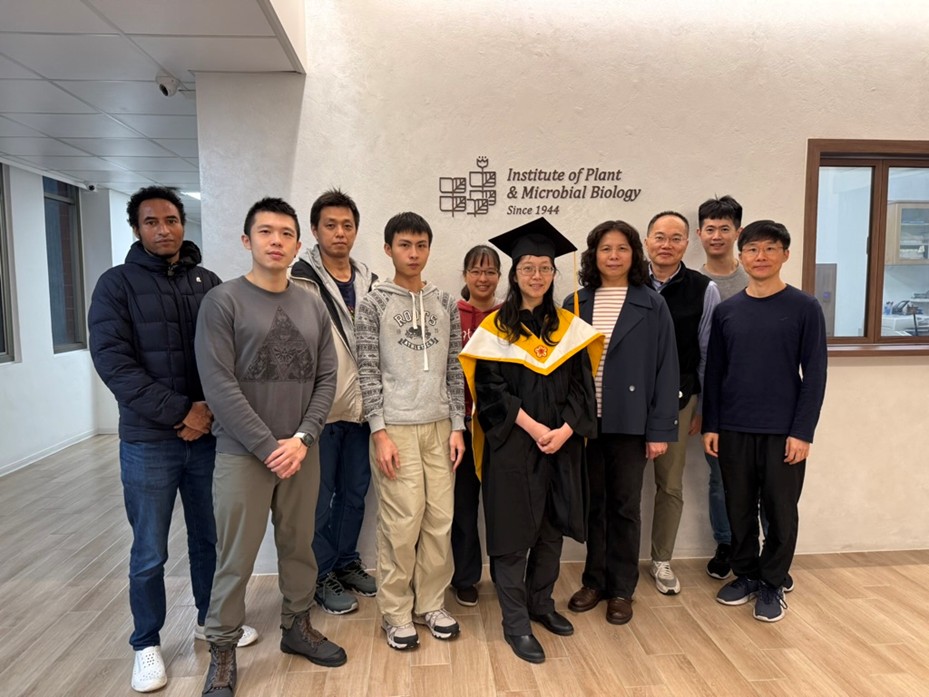
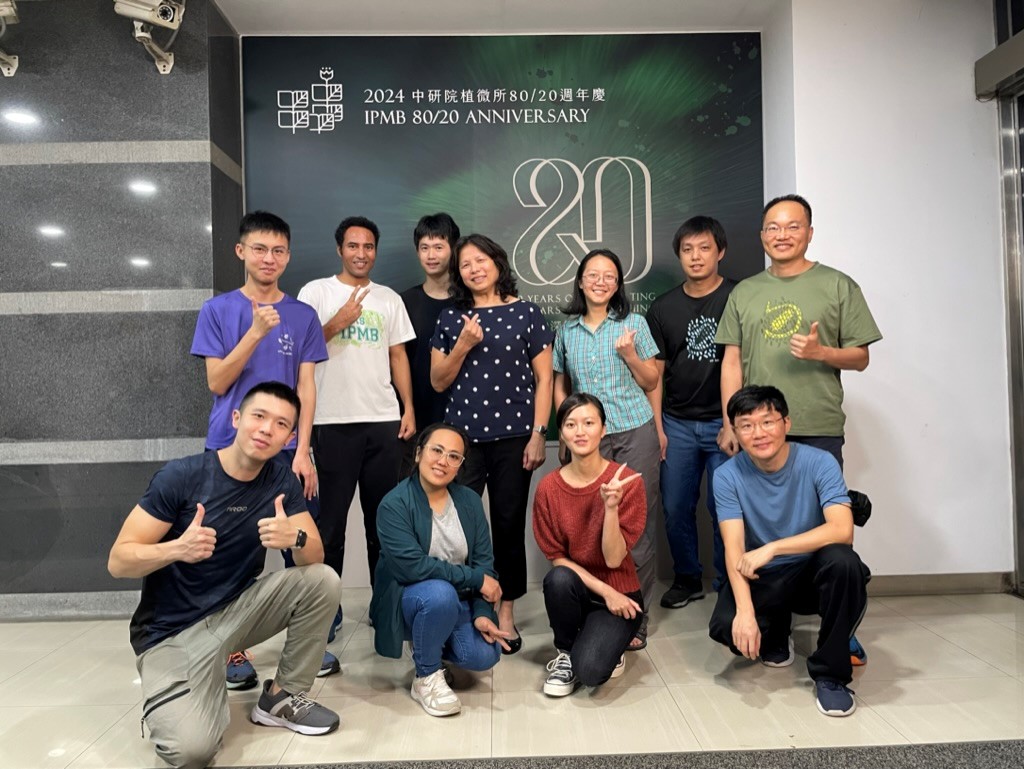


劉茂森 Mao-Sen Liu 專案研究員 Project Research Scientist msliu@gate.sinica.edu.tw

黃登魁 Teng-Kuei Huang 博士後研究 Postdoctoral Fellow tengkueih@gmail.com

王奕杰 Yi-Chieh Wang 實驗室經理 Lab Manager ejw@gate.sinica.edu.tw

吳宇 Yu Wu 博士候選人 Ph.D. candidate hooyagaga@yahoo.com.tw

賴軒 Xuan Lai 博士候選人 Ph.D. candidate d10b42001@ntu.edu.tw

哈格斯 Hagos Mohammedseid Juhar 博士候選人 Ph.D. candidate hagos98@gmail.com

宋立綱 Li-Kang Sung 博士候選人 Ph.D. candidate likang1994@sinica.edu.tw

溫永蕙 Yung-Hui Wen 博士候選人 Ph.D. candidate jcat19980706@smail.nchu.edu.tw

林柔齊Jou-Chi Lin 碩士生 Master student

徐灝文 Hao-Wen Hsu 大學部學生 Undergraduate student
Domestic
- 2018: Outstanding Research Award, Ministry of Science and Technology
- 2018: Investigator Award, Academia Sinica
- 2011: The Shang-Fa Yang Young Scientist Award, The Shang-Fa Yang Memorial Foundation
- 2010: Junior Research Investigator Award, Academia Sinica